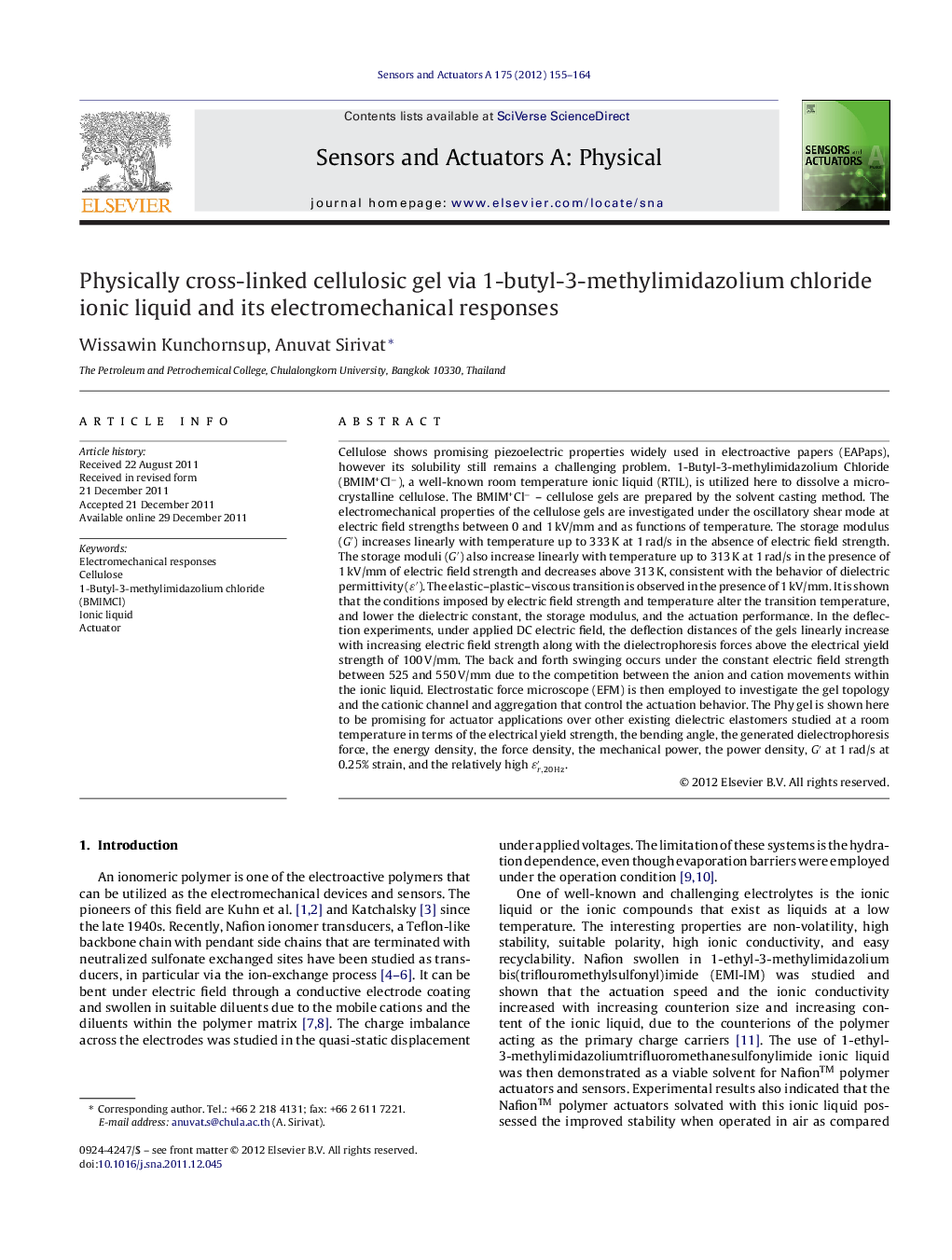| کد مقاله | کد نشریه | سال انتشار | مقاله انگلیسی | نسخه تمام متن |
|---|---|---|---|---|
| 739776 | 1461925 | 2012 | 10 صفحه PDF | دانلود رایگان |

Cellulose shows promising piezoelectric properties widely used in electroactive papers (EAPaps), however its solubility still remains a challenging problem. 1-Butyl-3-methylimidazolium Chloride (BMIM+Cl−), a well-known room temperature ionic liquid (RTIL), is utilized here to dissolve a micro-crystalline cellulose. The BMIM+Cl− – cellulose gels are prepared by the solvent casting method. The electromechanical properties of the cellulose gels are investigated under the oscillatory shear mode at electric field strengths between 0 and 1 kV/mm and as functions of temperature. The storage modulus (G′) increases linearly with temperature up to 333 K at 1 rad/s in the absence of electric field strength. The storage moduli (G′) also increase linearly with temperature up to 313 K at 1 rad/s in the presence of 1 kV/mm of electric field strength and decreases above 313 K, consistent with the behavior of dielectric permittivity (ɛ′). The elastic–plastic–viscous transition is observed in the presence of 1 kV/mm. It is shown that the conditions imposed by electric field strength and temperature alter the transition temperature, and lower the dielectric constant, the storage modulus, and the actuation performance. In the deflection experiments, under applied DC electric field, the deflection distances of the gels linearly increase with increasing electric field strength along with the dielectrophoresis forces above the electrical yield strength of 100 V/mm. The back and forth swinging occurs under the constant electric field strength between 525 and 550 V/mm due to the competition between the anion and cation movements within the ionic liquid. Electrostatic force microscope (EFM) is then employed to investigate the gel topology and the cationic channel and aggregation that control the actuation behavior. The Phy gel is shown here to be promising for actuator applications over other existing dielectric elastomers studied at a room temperature in terms of the electrical yield strength, the bending angle, the generated dielectrophoresis force, the energy density, the force density, the mechanical power, the power density, G′ at 1 rad/s at 0.25% strain, and the relatively high ε′r,20 Hzε′r,20 Hz.
Journal: Sensors and Actuators A: Physical - Volume 175, March 2012, Pages 155–164